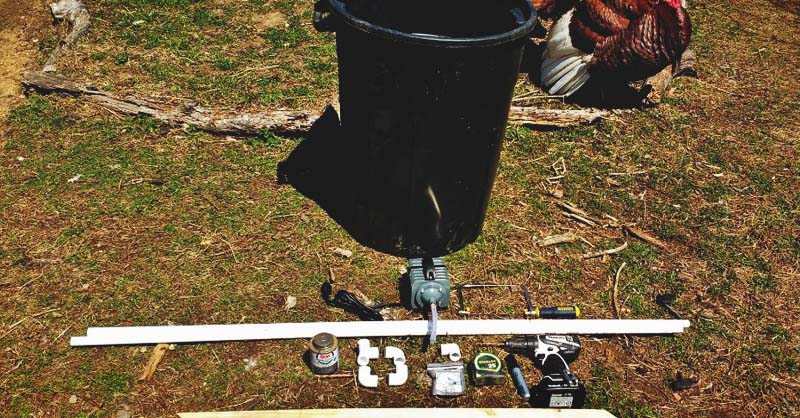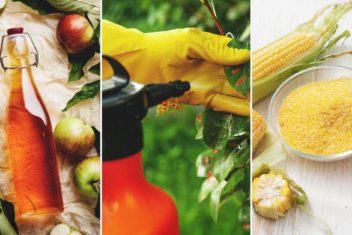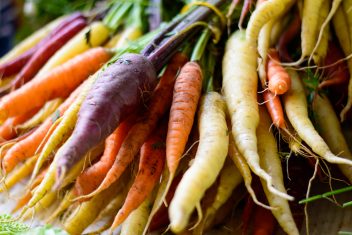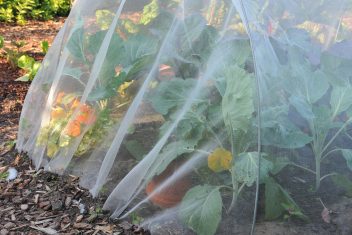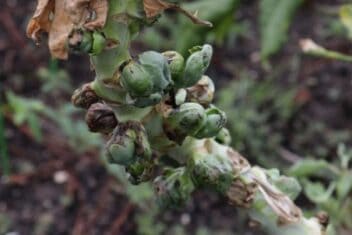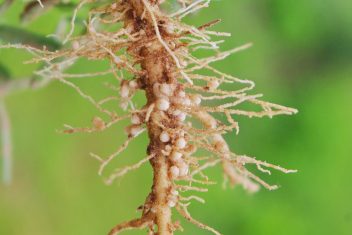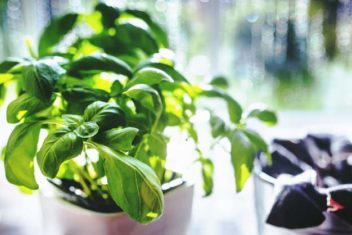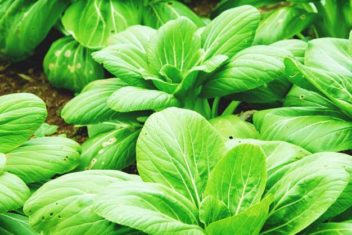I have been making good old-fashioned compost tea for years. All you do is wrap 2 pounds of your best quality compost in a flour sack towel, tie it off with a rubber band, and soak it in a 5-gallon bucket of water for a few days.
All the water-soluble nutrients from the compost dissolve into the water. Then mix one part tea to about 9 parts water, and use it to water your garden. You can also spray it all over the leaves for a nutrient boost.
This kind of compost tea works great as short-term fertilizer. However, it’s not a long-term soil amendment. For that, you need ACT.
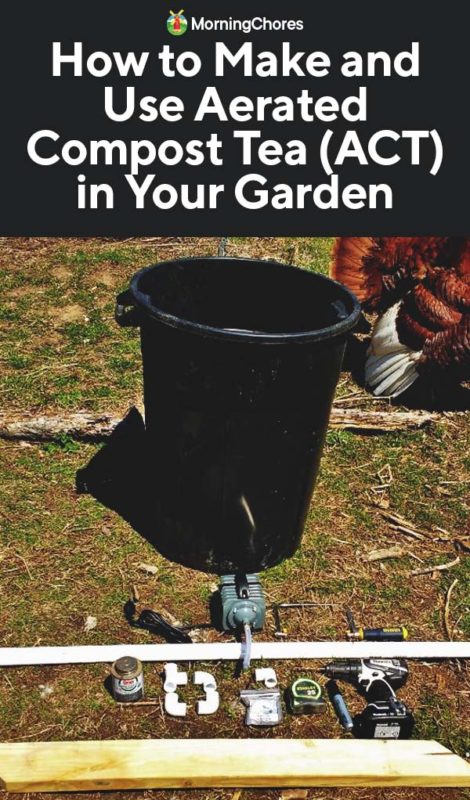
Aerated Compost Tea (ACT)
There’s another kind of compost tea, called Aerated Compost Tea (ACT), that is about so much more than basic plant nutrients. ACT is a kind of compost tea that specifically focuses on increasing the beneficial bacteria and fungi in your soil, to help your plants grow deeper roots.
Elaine Ingham, a soil expert, microbiologist, and author of “the” compost tea brewing manual and the USDA’s soil biology primer, has been saying for years it’s not just the plant nutrients in the soil that matters. The microbial content of the
In a nutshell, those little guys, only visible under a microscope, make up the foundation of the food soil web. When they are plentiful, then the soil can become its own plant nutrient factory and healthcare facility all in one.
If the soil provides more of the basic services that plants need to grow well, then gardeners can do less work. Since I am all about healthy plants with less work, I’ve done some extensive research on ACT and how to implement it at the homestead level. Here’s what I discovered.
The Dangers of ACT
In my research, I came across a huge amount of confusing information about brewing compost tea using an aerator. Normally I would just focus on what works in this post. However, in this case, there are some actual dangers to doing ACT wrong.
To help you avoid the hazards, I want to give you the analogy of the “dirty burger” to get you thinking about safety when making ACT.
The Dirty Burger
Say you take a raw hamburger, drop it in partially composted cow manure, and then lightly sear it in a pan. Do you think it would be safe to eat?
Of course not! I bet your stomach just flipped at the thought of it. We all know better when it comes to cooking meat.
Raw or undercooked meat is a perfect host for potentially toxic pathogens if not handled correctly. That is why in the US, all of our meat packages are legally required to come with safe-handling instructions.
When making aerated compost tea at home, there’s no labeling involved. So, as a homesteader, you need to educate yourself on the risks and create safe handling procedures. If you take a little time to know the risks, though, then your ACT will not be the equivalent of that dirty burger.
Safe Handling Procedures for ACT
The primary risk for ACT is the same as undercooking a dirty burger. In other words, if you let bad stuff into your process and then take short-cuts on your preparations, you increase your risks for pathogens.
Since the whole point of making ACT is to increase bacteria and fungi, it makes sense that a certain amount of caution is necessary. Luckily, there are some simple things you can do to make ACT safe.
Safe-Handling Tip 1: Use Plant-Based Compost
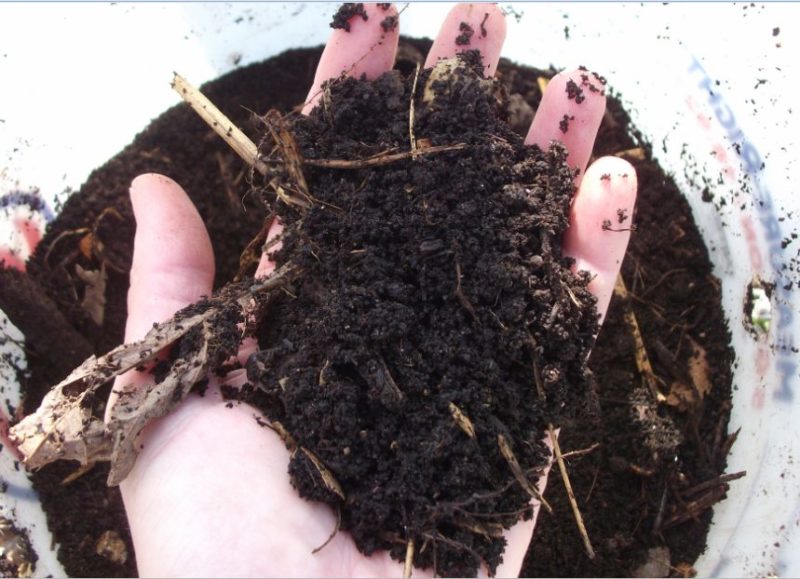
Composts made with livestock manure have a higher risk of containing potentially dangerous pathogens. If properly composted and aged, it’s not an issue. However, like our burger, partially composted cow or other animal manures raise risks radically.
If you are a composting expert and take great care making and aging your animal manure compost, then it can even be safe to use for aerated compost tea. Generally, though, the safer option is to use plant-based compost.
In particular, if you want to step up the safety factor, then use vermicompost from worms that have eaten a plant-based diet. The worms’ digestive processes increase beneficial bacteria and minimize the bad guys.
Safe-Handling Tip 2: Use Food Grade Feed Stock
When you make ACT, you also need to use some type of additional feedstock to nourish your micro-life. Things like blackstrap molasses, alfalfa meal, kelp meal, or fish fertilizer show up in many ACT recipes.
In general, using things that are labeled as safe to eat will mitigate your risks for introducing pathogens into the process. Blackstrap molasses approved for human consumption or plant meals that are approved for animal feed use are good options.
Fish-based fertilizers can be beneficial to the process. However, there’s a wide spectrum in quality out there and much less regulation on content than with food-grade feedstocks. I personally avoid them in ACT out of an abundance of caution.
If you do use them, though, make sure they come from a reputable source. Also, verify with the producer that they are processed in a way that makes them specifically safe for making aerated compost tea.
Safe-Handling Tip 3: Use Sufficient Oxygen
Adding enough oxygen is probably the hardest part to get right in this process. There are a lot of plans online that include picking up a cheap aquarium pump to use for ACT. That’s not a great idea and here’s why.
As your bacteria and fungi start to dramatically increase in numbers in your ACT, they all begin to breathe a lot. When they breathe, they take oxygen out of the water.
If you don’t continuously add enough oxygen to the mix, the water becomes more and more anaerobic. When that happens, harmful bacteria breed, and your good guys suffocate. So, using an insufficient pump can even be worse than not aerating at all!
Unfortunately, small aquarium pumps usually aren’t powerful enough to aerate water at a safe rate of 18-22% oxygen or 6-8 ppm oxygen for the entire ACT brewing time. They are about like giving a scuba diver half the airflow they need while they are in deep water – as in not safe!
A pump sufficient to make aerated compost tea, even in 5-gallon buckets, will usually cost you more depending on where you buy it.
Benefits of Using ACT
Now that you know a bit about the safe-handling requirements, why would you want to spend more to make ACT when you can make old-fashioned compost tea for free?
Here’s my answer in 3 words.
1. Better Social Networking
Making ACT dramatically increases the biological activity in your compost tea. Then you apply that to your soil and plants. So you effectively load your soil with all the microbiology your plants need to get ahead in life.
Using ACT is like giving your plants admittance to an elite club. With the help of those microbiological connections, plants gain access to entire underground social networks. These networks then allow plants to establish deeper, more extensive roots so they can be hugely successful in life.
To give you a real-life example, at
Talk about the benefits of being well-connected!
2. Slower Top Growth
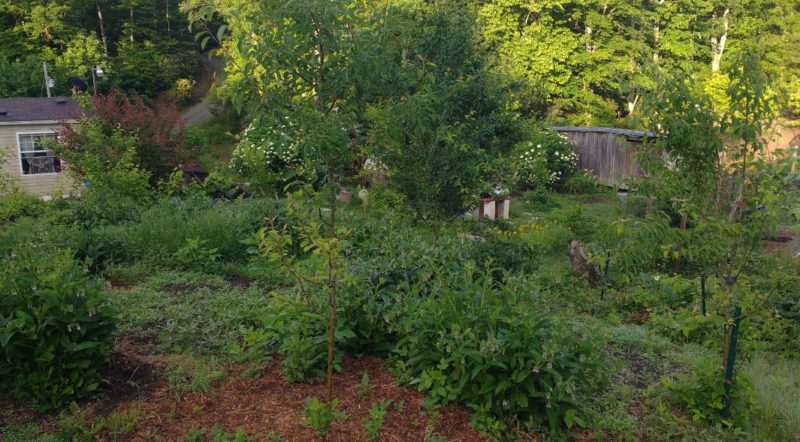
Better root development also translates to slower top growth. It may not sound like a benefit, but if you only have to mow your lawn monthly instead of weekly, isn’t that a good thing?
Slower top growth doesn’t always mean less production. For example, in fruit trees, when trees make lots of top growth, they tend to produce less fruit. Root development over top growth is great for most fruit-bearing perennials.
Even in herbs, better root development may mean less top growth, but greater potency in each leaf harvested. From a medicinal or even culinary perspective, that can make for a much better end product.
3. Greater Environmental Resilience
Plants with deeper roots have access to more nutrients than those with shallow roots. That means plants don’t require the addition of as many external inputs such as fertilizer for good health.
They also have access to deep-stored water and are less prone to drying out in droughts. They are better anchored to the ground and less likely to fall over or get root rot in mega rain events.
4. When Not to Use ACT (Maybe)
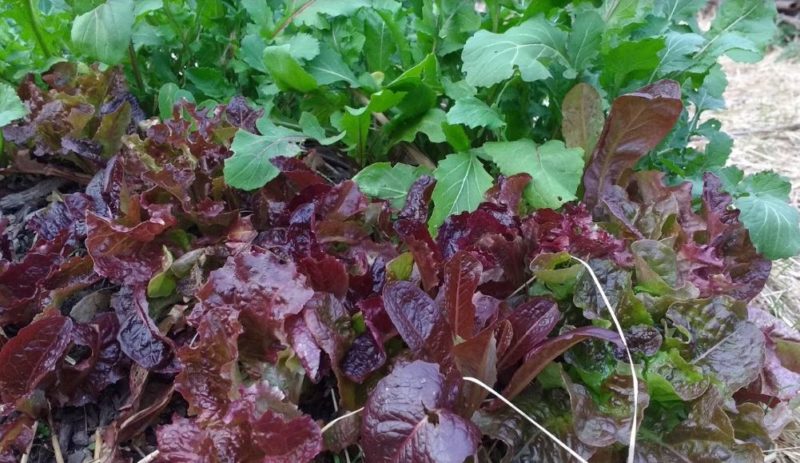
Now, all those benefits of ACT are fantastic for things like perennial plants or lawns. However, if your goal is speedy top growth such as for fast lettuce production, then ACT might not be a benefit. If you are growing cover crops for biomass to make plant-based compost, then ACT can also slow production.
Still, even in the vegetable garden, if you are willing to wait a little longer to harvest more nutrient-dense food, then ACT can help.
Now that you know the safe handling procedures, the benefits, and times when ACT might not get you the results you want, let’s get down to the details of making it.
7 Steps for Making ACT
Making ACT is super simple. Here are the steps.
- Fill your ACT vessel with potable chlorine and chloramine free water.
- Submerge your aeration device (connected to your pump) in the water, turn it on and let it run for at least 2 hours to aerate the water.
- Put 1/3-pound compost, 1/3-ounce blackstrap molasses, and 1/5-ounce water soluble kelp, for every gallon of water, into a 400-micron compost tea bag and drop that in your aerated water.
- Keep the aerator running in your vessel for 3 days.
- Turn off and remove the aeration device and tea bag from your ACT.
- Use your ACT to water your garden or spray on your plants.
- Thoroughly clean your equipment after each use.
That’s the short version. Now for a few more details.
ACT Vessels
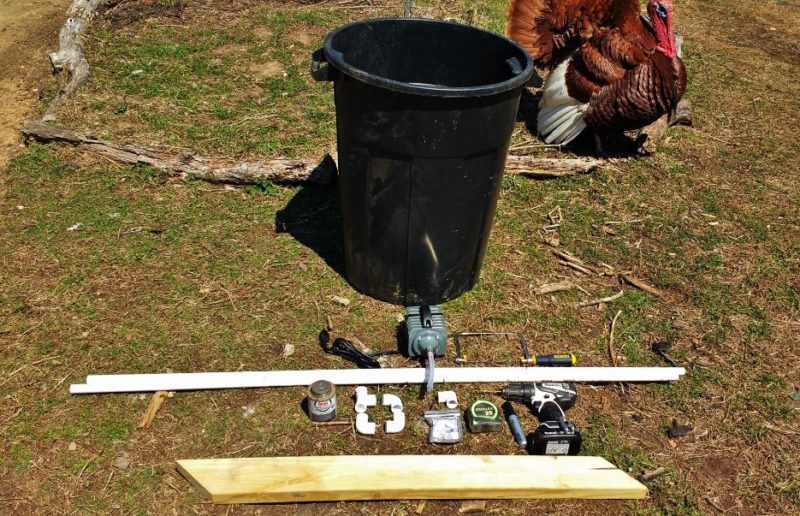
Round containers are generally preferred for ACT because they allow for free movement of the air in the water. You don’t want any dead spots in the air circulation.
Beyond that, choosing something easy to clean makes your job easier. Ideally, you also want it to be food grade, so toxins don’t enter the process from your container. Five-gallon buckets, round rubber trash cans, or re-purposed drums are good choices.
Some people like to put spigots on the bottom to get the tea out when done. However, you can also dip it out with a spouted container (e.g. measuring cup or pitcher) to use it.
Pump Requirements
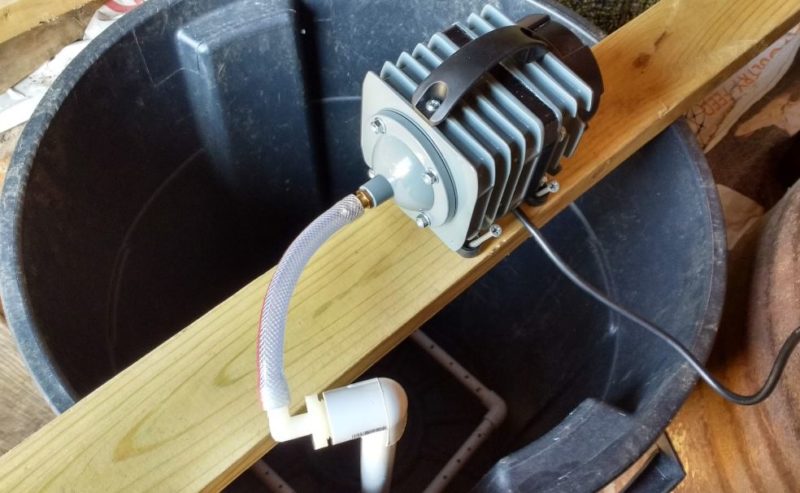
General pump rate recommendations for sufficient aeration are based on the size of your system. Here are some of the commonly given guidelines for proper aeration below.
- Around 950+ GPH pump for 5-15 gallon brewers
- Around 1150+ GPH pump for 25-35 gallon brewers
- Around 1250+ GPH pump for 55-gallon brewers
You can use a bigger pump in a smaller system as long as your water is not jumping out of your vessel. However, don’t use a smaller pump in a bigger vessel or you likely won’t get enough dissolved oxygen for good
Also, choose pumps that are rated “commercial” and come with warranties. Submersible pumps are usually not used for aerated compost tea since they have to be cleaned after each use.
The Aeration Device

Once you have a good pump, then you need to connect it to some device to circulate air from the pump into the compost tea. For a while air stones like what you use in aquariums were popular. Like submersible pumps, though, air stones are harder to clean.
Now, the most common methods for aerating are using snakes, PVC pipe, or lengths of tubing coiled in the water. I based my own design shown above on a configuration from the Energy and Facilities Department from Harvard.
The Tea Bag
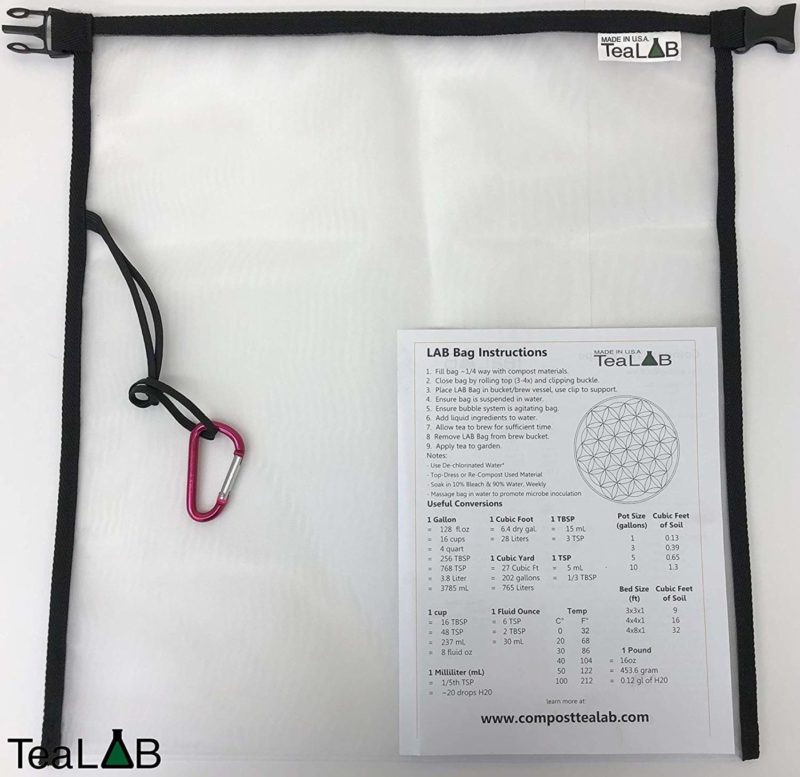
A 400-micron filter compost bag is recommended for brewing tea. It keeps the compost in and allows the micro-life to pass through the bag easily.
If you plan to use a backpack sprayer to apply ACT to the leaves of plants, a good compost tea bag is really important. Any bag you use should be easy to clean.
If you’d rather buy a kit that already has all the components, here is a complete 5-gallon compost tea brewer ready to go.
Application Rates
Figuring out application rates for aerated compost tea is also a bit tricky because every batch you make will have somewhat different micro-life quantities. Here are some general guidelines though.
1. Foliar Spraying
For foliar spraying, do not dilute. Simply spray enough to coat the entire plant.
Foliar applications of compost tea are often used to help promote plant resistance to fungal pathogens and pest infestations. For this to be effective, ACT must be applied every 1-2 weeks and after any heavy rains, similar to other foliar spray treatments.
2. Soil Applications
According to Elaine Ingham’s work, for soil applications, you need about 5-gallons an acre. That translates to about a bit more than a pint for every 1000-square feet.
For at-home, non-professional ACT, our bacterial and fungi content may be lower than in professional brews. So, using more tea can be beneficial. Some recommendations say you can go as high as 1-gallon per 250-square feet with good results.
When applying directly to the soil, the goal is to water all of your soil for the
Other Tips for Making ACT
There are a few other things you need to know to make good ACT.
- Aim for air temperatures between 55-85°F during the entire brewing process for the best results
- Water temperatures should never be greater than 100-110°F
- Bacteria counts increase in 24 hours of brewing. Fungi take more like 48-72 hours. So brew longer for a better-balanced tea
- Fresh-brewed compost tea is most beneficial. Though, many people do store it for a week or two
Conclusion
Good soil is the foundation for healthy plants. Although it takes a bit of work and a little expense to set up a good ACT brewing process, your plant roots will thank you by growing deep.
Supporting your homestead landscapes with ACT can make your job as a gardener easier and give you better food production with higher nutrient density. Your entire homestead ecosystem will thank you too because a thriving soil food web benefits more than just us humans.
ACT now! Don’t wait!
